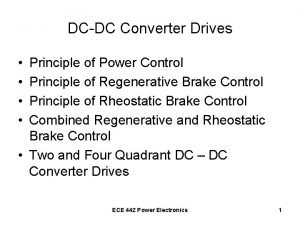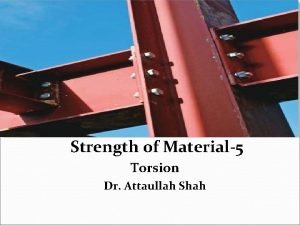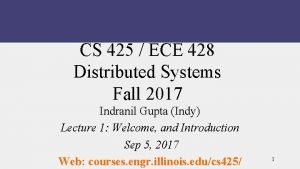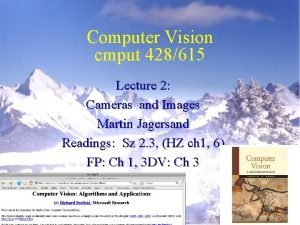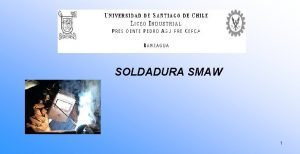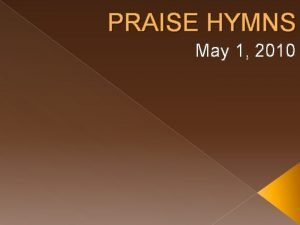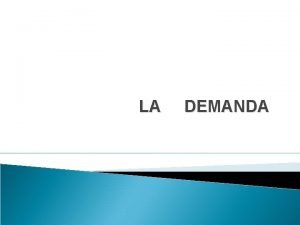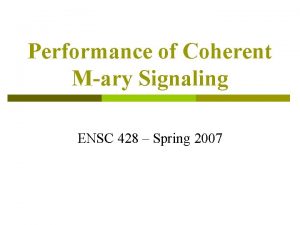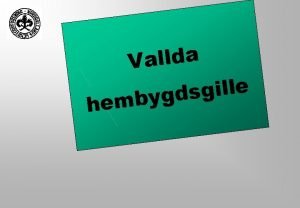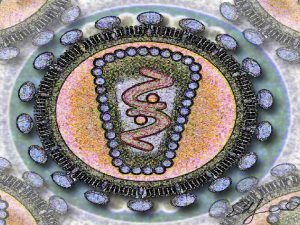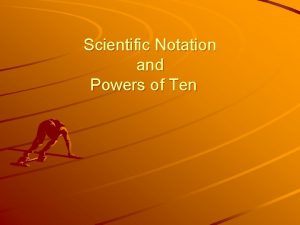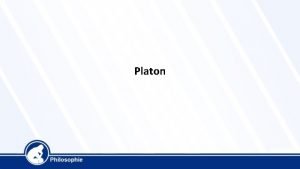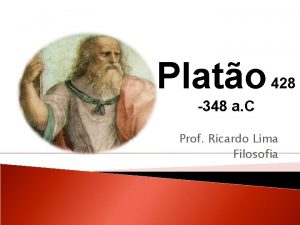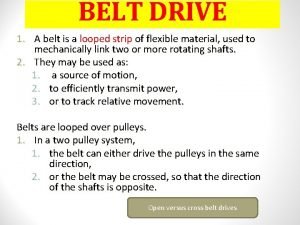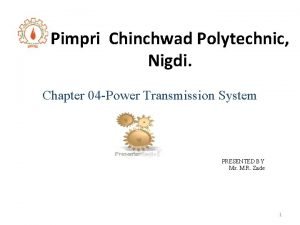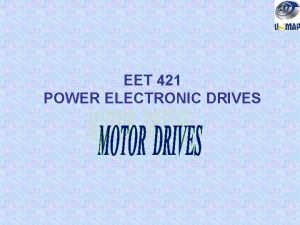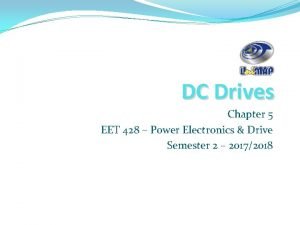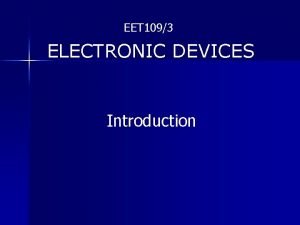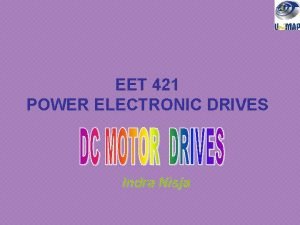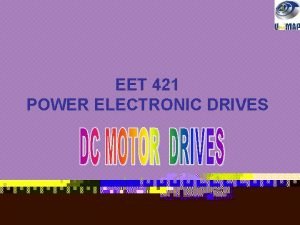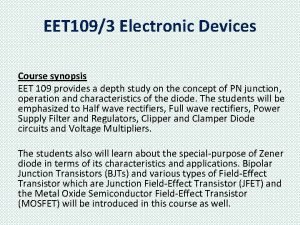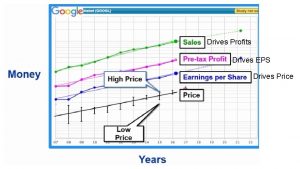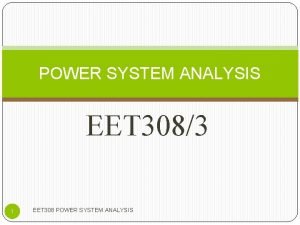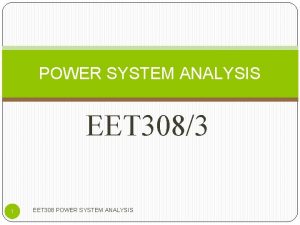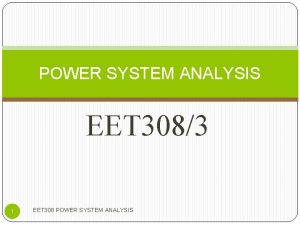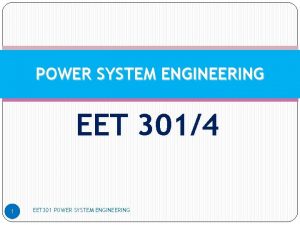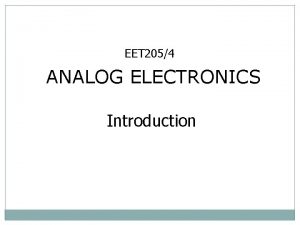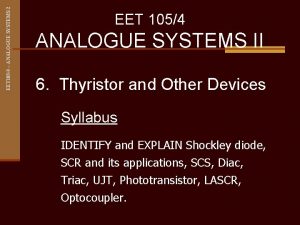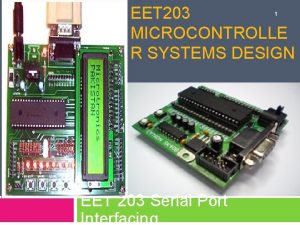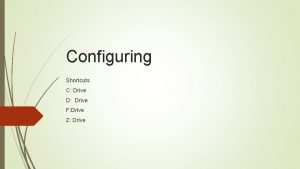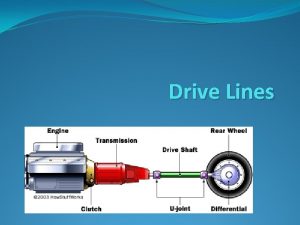EET 428 Power Electronic Drives AC Drive Part























- Slides: 23

EET 428 Power Electronic Drives AC Drive Part 2 1 Mohd Azrik Roslan EET 428 Power Electronic Drives Uni. MAP

What to learn in this topic • • • 2 Examples related to Induction motor drives Slip Energy Recovery Static Resistance Control Static Kramer Drive Static Scherbius Drive Mohd Azrik Roslan EET 428 Power Electronic Drives Uni. MAP

• Example 7 As an engineer at a factory in Malaysia, you have been assigned to select a suitable induction motor to be used for one process in the production line. It will be connected to a constant torque load of 140 N-m and should be able to operate at a speed range of 1100 rpm to 1480 rpm. A variable speed drive that is capable to output a frequency range of 0. 5 Hz to 500 Hz, will be used to control the speed of the motor. You are given three different induction motors to select. a) Choose the best motor based on the requirement b) If the motor is connected to the given load and operated at a speed of 1440 rpm, determine the efficiency of the motor given that the rotational losses are 500 W and the core losses are 600 W. Assume that the change in rotational losses due to the change in speed is minor c) If the frequency applied to the motor can be varied by ± 5% of the rated frequency (at the rated voltage), determine the highest and lowest motor speed if the stator frequency technique is used to control the motor speed. Please state any assumption made. 3 Mohd Azrik Roslan EET 428 Power Electronic Drives Uni. MAP

• Example 8 You are given an induction motor with the specification given in Table a) Determine the maximum torque and rotor speed at maximum torque. b) Assume that your motor has a rated output power of 95 HP and driving a load that is linearly proportional to the shaft speed. You are required to reduce the speed of the motor by 15% without changing the frequency of applied voltage. Propose a suitable control technique to achieve the speed requirement and find all relevant parameters c) Calculate the motor current at this new speed 4 Mohd Azrik Roslan EET 428 Power Electronic Drives Uni. MAP

• Example 8 5 Mohd Azrik Roslan EET 428 Power Electronic Drives Uni. MAP

Slip Energy Recovery • Recall that we can control speed using rotor resistance • Although this approach is very simple, it is also very inefficient because the slip energy is wasted in the rotor resistance. • Oldest and simplest method • To mechanically vary the rotor resistance (rheostat) • In slip-ring IM • Slip rings allow easy recovery of the slip power which can be electronically controlled to control the speed of the motor 6 Mohd Azrik Roslan EET 428 Power Electronic Drives Uni. MAP

Slip Energy Recovery • Applications • • • 7 Large-capacity pumps and fan drives Variable-speed wind energy systems Shipboard VSCF (variable-speed/constant frequency) systems Variable speed hydro-pumps/generators Utility system flywheel energy storing systems Mohd Azrik Roslan EET 428 Power Electronic Drives Uni. MAP

• Static Resistance Control • An electronic chopper implementation is also possible as shown below but is equally inefficient. • The portion of the air-gap power which is not converted into mechanical power, is called slip power. • The slip power is dissipated in the resistance R. • Therefore, this control is also known as slip control by chopper. 8 Mohd Azrik Roslan EET 428 Power Electronic Drives Uni. MAP

• Static Resistance Control, cont • The resistance R between terminal A and B will be zero when transistor is on and it will be R when it is off. • Therefore average value of resistance between terminals is given by Where D is transistor’s duty ratio • Power consumed by RAB 9 Mohd Azrik Roslan EET 428 Power Electronic Drives Uni. MAP

• Static Resistance Control, cont 10 Mohd Azrik Roslan EET 428 Power Electronic Drives Uni. MAP

• Static Resistance Control, cont • Compared to conventional rotor resistance control, static resistance control has several advantages • • • 11 smooth and stepless control Fast response less maintenance compact size simple closed-loop control rotor resistance remains balance between the three phases for all operating points. Mohd Azrik Roslan EET 428 Power Electronic Drives Uni. MAP

• Instead of wasting the slip power in the rotor circuit resistance, a better approach is to convert it to ac line power and return it back to the line. • Two types of converter provide this approach: 1. Static Kramer Drive • only allows operation at sub-synchronous speed. 2. Static Scherbius Drive • Allows operation above and below synchronous speed 12 Mohd Azrik Roslan EET 428 Power Electronic Drives Uni. MAP

• Static Kramer Drive • A schematic of the static Kramer drive is shown below: vwound rotor output is connected to a 3 -phase rectifier bridge v. The output of the bridge is connected to a fixedfrequency inverter v. Inverter’s output is connected to the primary power supply that supplies the motor stator v. The connection from the inverter output to the primary power supply is generally through a matching transformer 13 Mohd Azrik Roslan EET 428 Power Electronic Drives Uni. MAP

• Static Kramer Drive 14 Mohd Azrik Roslan EET 428 Power Electronic Drives Uni. MAP

• Static Kramer Drive operating principle • The voltage at the slip rings is forced to be in phase with the rotor currents by the diode rectifier. • The magnitude of the slip ring voltage is set by the DC link voltage • DC link voltage is set by the inverter connected back to the AC supply. • the inverter can be a thyristor based or PWM inverter. 15 Mohd Azrik Roslan EET 428 Power Electronic Drives Uni. MAP

• Static Kramer Drive operating principle, cont • Rotor phase voltage • If we neglect voltage drop in the drive, the rectifier output voltage becomes 16 Mohd Azrik Roslan EET 428 Power Electronic Drives Uni. MAP

• Static Kramer Drive operating principle, cont • If we neglect the rotor copper loss, • So the following torque relationship can be used • rectifier output current becomes 17 Mohd Azrik Roslan EET 428 Power Electronic Drives Uni. MAP

• Static Kramer Drive operating principle, cont • If we are not neglecting the rotor copper loss, • So the following torque relationship can be used • rectifier output current becomes 18 Mohd Azrik Roslan EET 428 Power Electronic Drives Uni. MAP

• 19 Mohd Azrik Roslan EET 428 Power Electronic Drives Uni. MAP

• Static Scherbius Drive • The static Scherbius drive overcomes the forward motoring only limitation of the static Kramer drive. • Regenerative mode operation requires the slip power in the rotor to flow in the reverse direction. • This can be achieved by replacing the diode bridge rectifier with a thyristor bridge. • This is the basic topology change for the static Scherbius drive from the static Kramer drive. 20 Mohd Azrik Roslan EET 428 Power Electronic Drives Uni. MAP

• Static Scherbius Drive 21 Mohd Azrik Roslan EET 428 Power Electronic Drives Uni. MAP

• This drive is inherently regenerative, and the output can be controlled up to half the supply frequency in both phase sequences. • It is thus possible for the system to operate as a full 4 quadrant drive. • For a given converter rating the range of speed control is therefore twice that of a static Kramer drive. • The relative complexity of the drive limits application to somewhat specialised high power applications where a very limited speed range only is required and perhaps stringent harmonic current limits have been imposed by the supply authority. 22 Mohd Azrik Roslan EET 428 Power Electronic Drives Uni. MAP

Example • 23 Mohd Azrik Roslan EET 428 Power Electronic Drives Uni. MAP
 Googlehttps://drive.google.com/drive/u/0/my-drive
Googlehttps://drive.google.com/drive/u/0/my-drive Slide to doc.com
Slide to doc.com Google drive
Google drive Four quadrant operation of dc dc converter
Four quadrant operation of dc dc converter An aluminum shaft with a constant diameter of 50mm
An aluminum shaft with a constant diameter of 50mm Ece 428
Ece 428 Cmput 428
Cmput 428 Union traslapada
Union traslapada Hymn 428
Hymn 428 Importancia de la demanda
Importancia de la demanda Opwekking 714
Opwekking 714 Ensc 428
Ensc 428 Psalm 428
Psalm 428 428 pharma
428 pharma 428 000 in scientific notation
428 000 in scientific notation 428-348
428-348 428 - 348
428 - 348 Is the electronic exchange of money or scrip
Is the electronic exchange of money or scrip Electronic field production examples
Electronic field production examples Ac power formula
Ac power formula Differentiate between belt drive and chain drive
Differentiate between belt drive and chain drive 1https://drive.google.com/drive/u/1
1https://drive.google.com/drive/u/1 Http drive google com
Http drive google com Difference between chain drive and belt drive
Difference between chain drive and belt drive



